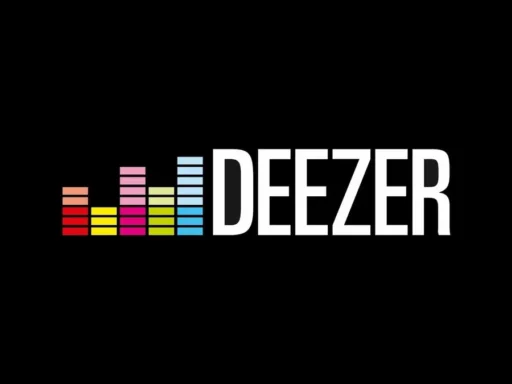Is it just me or does it feel like artificial intelligence is everywhere you look these days? Whether you’re using a chatbot to book flights or your doctor suggests an AI-powered diagnosis tool, there’s no escaping it. That brings up some real worries for people and businesses alike—like how safe are these systems? Who’s making sure they’re not doing something shady with our data? And if you’re building AI yourself (or buying tools that use it), how do you keep up with Europe’s constantly shifting rulebook?
I’ve spent years breaking down complicated tech trends into bite-sized pieces that don’t put you to sleep—and today I’m diving into the AI regulations EU landscape. The European Union’s brand-new AI Act is about as big as regulatory news gets this year. But what actually changes for companies and consumers? Can rules really balance innovation with privacy concerns without turning every startup into a lawyer’s best friend?
Let’s get straight to what matters: what the new law covers right now, what you stand to gain from these changes, and which four areas could make or break your next project.
The EU AI Act And Main Regulations Until Now
Nobody wants their fridge running their life—or worse, judging them for midnight snacks—so when Brussels says they’re rolling out landmark rules on artificial intelligence, everyone perks up.
The newly adopted EU AI Act doesn’t pull any punches: its mission is to set ground rules for anyone developing or deploying AI within Europe’s single market. This isn’t just about stopping evil robots—it’s about sorting AIs by risk level so we all know where we stand.
Here’s the rundown:
- Unacceptable Risk: Think social scoring or manipulative systems that mess with fundamental rights—these are banned outright.
- High Risk: Tools used in healthcare diagnostics or policing have extra hoops to jump through (like mandatory risk assessments).
- Limited Risk: Chatbots must tell you they’re not human—no more talking to “Dave” who turns out to be pure algorithm.
- Minimal Risk: For low-stakes stuff like spam filters and smart games—regulators mostly stay hands-off.
So if your business touches anything regulated—from hospitals running diagnostic algorithms to job boards automating resume scans—you’ll want a strong compliance game plan.
Benefits Of The EU AI Act
And then there are benefits for innovators too:
| Who Wins? | How They Benefit |
|---|---|
| Consumers | More control over personal data; transparent info on when you’re dealing with an algorithm; peace of mind in high-stakes scenarios. |
| Businesses/Startups | Clearer guidance reduces legal guesswork; harmonized rules mean one set of standards across all EU countries—not twenty-seven conflicting ones! |
Add in improved public confidence—which often means higher adoption rates—and suddenly regulation isn’t such a dirty word after all.
Four Key Areas Of AI Regulations In The EU
The devil is always in the details when it comes to compliance. Let me break down exactly where most organizations need eyes wide open:
- General Requirements For All AI Systems:
Every developer needs robust documentation showing how their product works under the hood—even if it’s “just” answering emails faster than humans ever could. - AI Risk Management:
You can’t just toss code onto servers and hope for the best. There needs to be a repeatable way of assessing potential harm before launch—with reviews built into every stage of development. - Human Oversight And Rights Protection:
No system should operate without someone able to step in when things go sideways. Human checks ensure decisions can be explained (and challenged) whenever necessary. - Testing And Continuous Performance Monitoring:
Post-launch vigilance matters—a chatbot that starts spouting nonsense after six months won’t win hearts (or avoid fines). Regular monitoring keeps performance sharp while flagging problems early.
If this sounds like a heavy lift compared to old-school software launches—that’s because it is! But given how much power modern AIs wield over our daily lives, that’s probably not a bad thing.
Future Challenges and Business Implications
What keeps business owners up at night with the new AI regulations EU? For starters, everyone’s trying to figure out how not to land on the wrong side of this massive rulebook. The ink is barely dry on the AI Act, but already companies are facing big questions: Will compliance slow down innovation? Could fines hit harder than a Monday morning after a long weekend?
AI governance isn’t just about ticking boxes anymore. It’s like putting together IKEA furniture—with half the instructions in Swedish and no extra screws if something goes wrong. Businesses must build trust with users, show regulators they’re playing fair, and keep up with shifting definitions of “high risk” or “unacceptable risk.” If you thought GDPR was tough, get ready for another level.
Smaller startups worry most. Compliance costs could squeeze them out before their product even hits market. On the flip side, major players face public scrutiny—no one wants to be headline news for flouting transparency or misusing biometric data. This all means more paperwork, audits that go deeper than your last dental checkup, and a spotlight on every step your algorithms take.
Implementing AI Governance Frameworks
If you run an organization using smart tech—even something as basic as a chatbot—the time for an ad hoc approach is over. Now it’s about proactive planning.
- Assign roles: Who owns oversight? Define clear lines between tech teams, legal departments, and C-suite decision makers.
- Create policies: Think playbooks covering ethical use cases, red flags (like social scoring), and steps when risks pop up.
- Monitor performance: Set triggers for regular review sessions—especially as laws evolve faster than your favorite streaming series drops new episodes.
- Engage stakeholders: Loop in employees early; bring external auditors when needed; make customers feel included by explaining what’s changing.
Real talk: Building these frameworks isn’t glamorous work—but skipping them leads to drama nobody wants (or can afford).
Business Compliance Obligations
Once upon a time, labeling your site “GDPR-compliant” felt like enough. Not anymore! The EU now expects businesses to do more heavy lifting around AI transparency and accountability.
Imagine rolling out an automated recruitment tool—it needs thorough documentation showing non-discrimination in hiring decisions plus easy explanations for candidates who ask why they weren’t picked. Use biometric security features? You’ll have to demonstrate you’re not creeping into surveillance territory.
Failing here isn’t just risky—it could mean steep fines or blocked access to lucrative markets. And let’s not forget reputation damage from negative press coverage if compliance lapses make headlines.
Training and Documentation Requirements
Training people on what counts as compliant AI use is more critical than ever. Gone are the days when “just Google it” worked for regulatory answers!
- User manuals: Clear guides outlining correct system usage (and limitations).
- Audit logs: Easy-to-access records tracing every algorithm tweak or user interaction.
- Bespoke workshops: Tailored learning sessions so every department knows its responsibilities—from engineers tweaking code to HR teams handling candidate data.
If documentation feels endless right now—that’s because it kind of is! But investing here upfront reduces headaches down the line.
Adapting AI Systems and Processes
No company can coast along using legacy systems without updates—not if they plan to survive future audits or market shifts triggered by AI regulations EU requirements.
Or consider content moderation tools powered by machine learning; platforms must fine-tune algorithms regularly while offering ways for users to appeal bad calls transparently.
Adaptability isn’t optional—it’s core business strategy going forward.
Main Implementation Steps for EU AI Regulations
Initial Assessment of AI Systems
The smartest move any business can make post-AI Act adoption? Start with brutally honest self-assessment.
What do you actually use AI for today—chatbots answering customer queries or predictive analytics optimizing logistics?
- Your full inventory of current and planned AI applications (even tiny proof-of-concepts count!)
And don’t expect a one-time exercise; regular reviews will become part of business DNA.
Risk Analysis and Mitigation Strategies
Nobody likes surprises—especially expensive regulatory ones.
This stage boils down to understanding which category each system falls into:
- Banned uses (unacceptable risk): Slam dunk—don’t touch these unless you want legal trouble fast!
- High-risk systems: Need robust internal controls (think double-layered safety nets). Healthcare diagnostics? Automated HR screening tools? These need frequent checks against bias/data misuse plus documented human oversight at every step.
Documentation and Record-Keeping
“Do we have evidence?” Well—that question gets real in compliance situations.Companies need airtight record-keeping:
- Tamper-proof audit trails showing who did what/when/why
- User-facing logs that help explain how automated decisions were made
- Easily retrievable reports during random regulator spot-checks
An organized paper trail becomes your best defense when scrutiny arrives.
Think of it as building receipts in case anyone ever asks,“How do we know you followed the rules?”
No shortcuts allowed here—or those missing files could cost much more than extra cloud storage fees!
Industry-Specific AI Applications and Regulations
Everyone’s talking about artificial intelligence. But if you work in finance, healthcare, or public service, your biggest question is probably this: “Will these new AI regulations EU actually help me, or are they just more red tape?” Let’s be real—each industry faces its own headaches when it comes to AI compliance.
Start with financial services. Banks and fintechs have been riding the algorithm wave for years—think fraud detection that pings faster than your credit card can swipe. Now, the EU’s AI Act says systems handling stuff like credit scoring are “high-risk.” That means mandatory audits, extra data transparency, and showing a human is still in the loop somewhere. For smaller startups? It’s like being asked to run a marathon with ankle weights—but it does force everyone to build trust into their tools from day one.
In healthcare and medical devices, things get even trickier. Sure, AI can spot tumors faster than most humans blink—but what if it gets it wrong? The AI regulations EU are crystal clear here: diagnostic software lands in the “high risk” bucket. Providers have to prove accuracy and keep patients informed whenever an AI had a hand (or silicon chip) in their treatment plan. According to Bertelsmann Foundation research, nearly half of Europeans worry about how much we lean on machines for diagnoses.
Manufacturing loves automation—it keeps costs down and productivity up. But now any smart robot that could mess with workplace safety has regulatory eyes on it too. Manufacturers must show continuous risk assessment and make sure employees know when they’re dealing with robots rather than people.
- Finance: Strict oversight for anything touching loans or customer profiling.
- Healthcare: Transparency plus ironclad evidence of safety and accuracy.
- Manufacturing: New rules mean constant monitoring—and clear lines between human/robot tasks.
Public sector? Picture social benefit programs using predictive algorithms to flag fraud or automate approvals—the kind of tech some cities already use quietly behind closed doors. Under the new regime, every decision tool needs scrutiny for bias and fairness before rollout. Basically, “machine says no” isn’t good enough anymore; agencies need receipts proving decisions aren’t discriminatory.
Impact of EU AI Regulations on Global Business
If you’re running a business that crosses borders—even virtually—these rules won’t just stay inside Europe’s walls. You’ve got global skin in this game whether you want it or not.
Let’s talk cross-border data sharing first. The GDPR already made companies nervous about moving personal info out of Europe; now add layers from the new AI regulations EU wants enforced around risky models processing health records or user profiles across continents. Every handshake between servers sparks questions about compliance—not only within the company but also up and down supply chains.
International trade is next up at bat. Here’s where life gets spicy: If your product uses machine learning for something critical (like self-driving features), you’ll need an EU “passport” certifying safety before selling there—even if you’re based halfway around the world! This creates both barriers (“more hoops!”) but also opportunity: Crack compliance early and suddenly your tech becomes export-ready everywhere else as nations eye similar rulebooks.
Global compliance standards will likely morph thanks to this Brussels Effect—the way European rules set trends worldwide whether other governments sign on officially or not. Companies scrambling for harmonized policies may struggle at first (lots of legal bills ahead!), but they’ll gain competitive advantages too:
- – Compliance boosts consumer trust: People buy from brands playing by strictest rules.
- – First-movers win market share: Early adopters learn fast—and dominate slow-reacting rivals abroad.
Still, challenges stack high:
– Smaller businesses fear drowning under paperwork while giants throw armies of lawyers at loopholes.
– Some innovators see risk-aversion slowing creative breakthroughs (“Why launch wild ideas if regulators might shut them down tomorrow?”).
– Legacy firms face expensive upgrades—or risk getting blocked from lucrative markets entirely.
Bottom line: These fresh-from-Brussels laws aren’t just another policy memo—they’re shaping how smart products reach customers around the globe. Play smart now, position yourself as compliant early…or risk playing catch-up while competitors pass you by like yesterday’s newsfeed update.







